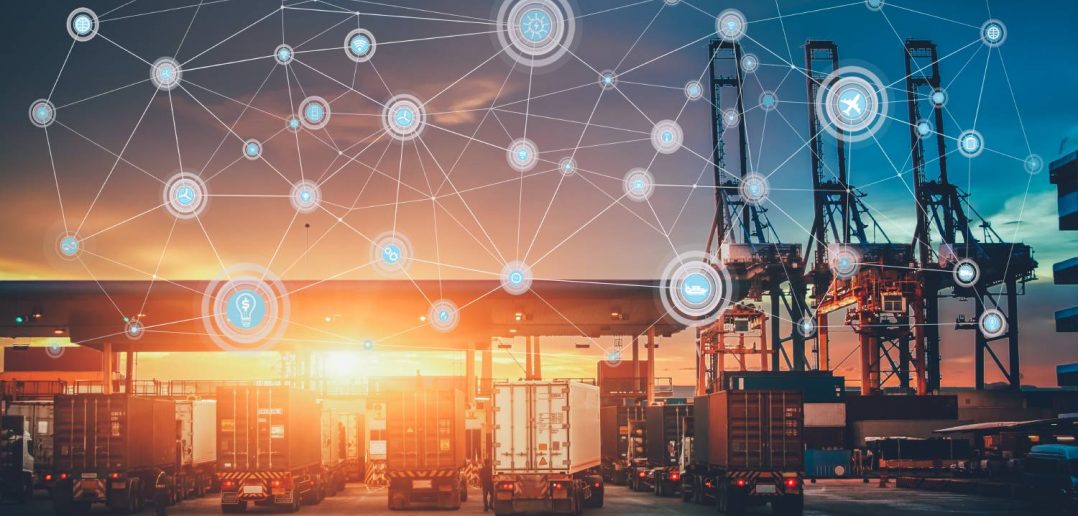Many executives may be feeling supply chain anxiety. The pace of disruptions – weather events, aggressive marketing techniques, transportation bottlenecks, and more – remains high, and there are already signs of consumer uncertainty in 2024.
To manage the unknown and keep supply chains strong, some organizations are employing intelligent, real-time digital strategies. The insights they provide can help create transparent supply chains, avoid disruptions, and boost resiliency.
“We play in the visibility space, so for us, it’s all about the question, ‘Where’s my stuff?’” says SAS partner Bart De Muynck, Strategic Industry Advisor at project44. “But our collaboration with SAS allows us to go even further: SAS helps turn our real-time data into predictive planning precision that creates a line of sight into the future. So the customer never has to wonder where a product is because they know where it's going to be with a high degree of accuracy.”

I speak regularly with supply chain experts – from SAS partners to advisors to customers – to hear the latest strategies for building strong, resilient supply chains. Below, several of these experts share their thoughts on how to create and maintain a stable and sustainable supply chain during even the most tumultuous times.
Shift your supply chain toward customer demand
Supply chain has always been critical to consumer packaged goods companies, but in years past, it was about manufacturing, logistics, cost cutting and lean processes. For the first time, the supply chain is also influencing an organization’s topline – so the focus is really shifting to demand and satisfaction. There’s now a correlation between the impact of the supply chain and brand image, which consumers judge at the shelf every day. So we need to think about reframing the supply chain from behind the scenes to giving the customer the best possible shopping experience. The best companies are turning the store journey into a wonderful, fun, and relevant experience. – Alex Tosolini, strategic advisor, board member, and retired executive in retail and consumer goods
Use simulations like digital twins to help you see the future
Organizations have a lot of tools that can help them to learn the past and even the present, but with digital twin simulation, we can actually help them read the future. So they can determine what's going to happen if they make a particular decision and what cascade effects they might see within their organization. With simulation, we're actually helping them answer the question, “What's going to happen when I do X, Y, or Z?” Companies are really investing in digital twin, simulation, AI, and hybrid AI to help them understand what's happening, where they're going, and so they can feel confident in their decisions. – Stephanie Kidder, Chief Marketing Officer at Cosmo Tech
Build a supply chain that’s both sustainable and resilient
Sustainability remains a top priority, but the reality is that sustainability and resiliency can be complementary. They use the same sources of data – from transportation providers, warehouses, distribution centers, and so on. As you’re collecting data and tracking emissions, for example, you’re also learning about the supply chain – so you can design it in a more thoughtful manner, which in turn makes it more resilient. In the short term, you’re able to react more quickly because you have real-time data to tell you when something is going wrong. In the longer term, you’ll have resiliency and sustainability built in. – Dr. Robert Handfield, Distinguished Professor of Supply Chain Management, NCSU
Manage seasonal shifts in supply and demand with forecasting solutions
Our goal is to provide high-quality products in the right place, at the right time, and at the right price. With perishables, this is challenging because there are many seasonal elements. For instance, on the supply side, mangos only grow in certain months; on the consumer side, people want avocados for the Super Bowl, grapes in December, and so on. So we really need to compute all of this and predict correct amounts so that products don’t decay on shelves. We use tools like data and analytics to keep our supply chains strong and especially to anticipate customer needs. As we continue to grow, we’ll keep using those forecasting tools to help us stay ahead of the game and keep our quality high. – Roberto Barraza López, Purchasing Manager, Calimax
Embrace digital transformation and upskill your staff to manage it
The need for transformation is pressing on retailers from every angle. There’s huge pressure to keep up: for instance, one of Sweden's largest grocery chains usually adjusts prices twice a year, but last year they did it 10 times. So retailers need to keep pace and make use of the agility, scalability, and elasticity that digital transformation enables. But they also need talent to support it. The National Retail Federation's theme this year is Breakthrough: breakthrough experiences, technology, and talent. So the talent issue is super important – not only do we need to embrace digital transformation, but we also give people the skills to manage it. – Miranda Edner, Senior Enterprise Sales, Amazon Web Services
Ensure your supply chain is strong at every step of the way
The supply chain's job is to make sure a product is available every day, on every shelf. After the last few years, we’re doing things differently to make sure our customers can get their consumers what they need. This means paying attention at every point in the supply chain. The first steps are to secure the right raw materials and then the right production lines, which means taking care of our associates in our facilities around the world. The next step is to work with SAS, which has helped us get much better at forecasting what to actually make. And finally, we work with our plants to get that product delivered. So it’s really about making it easier through all components, right through to the consumer. – Andrea Turner, former SVP of Global Customer Service & Logistics, Mondelez International
As your organization gears up for 2024, digital tools can help you spot curveballs ahead of time – and either eliminate or plan around them.


